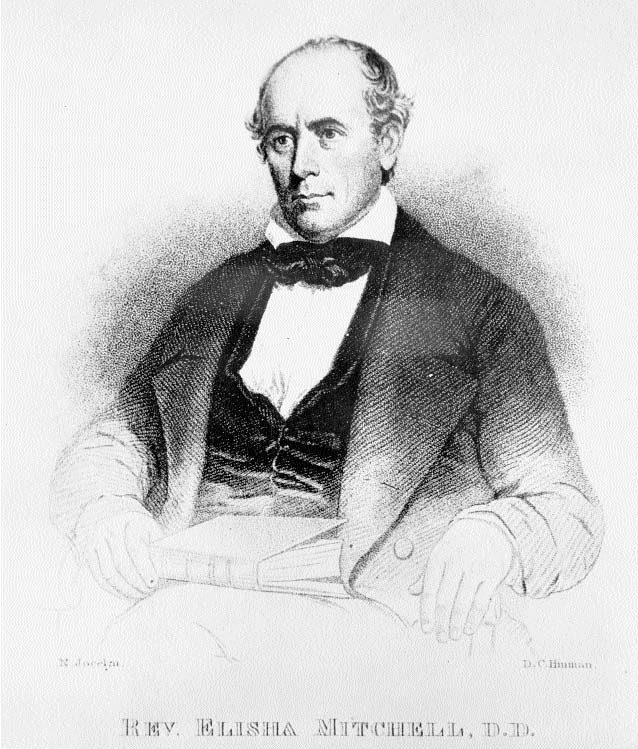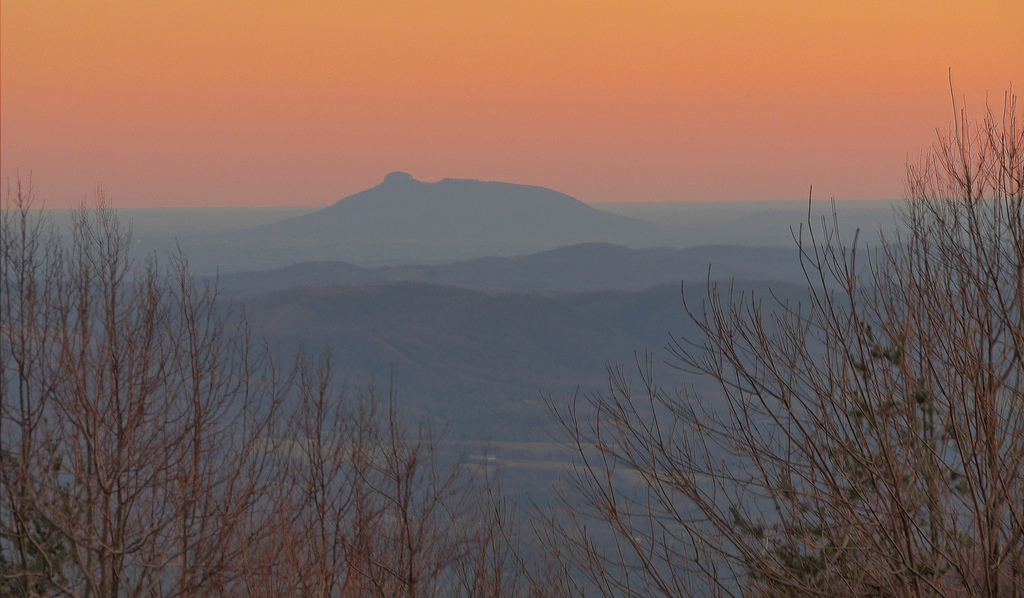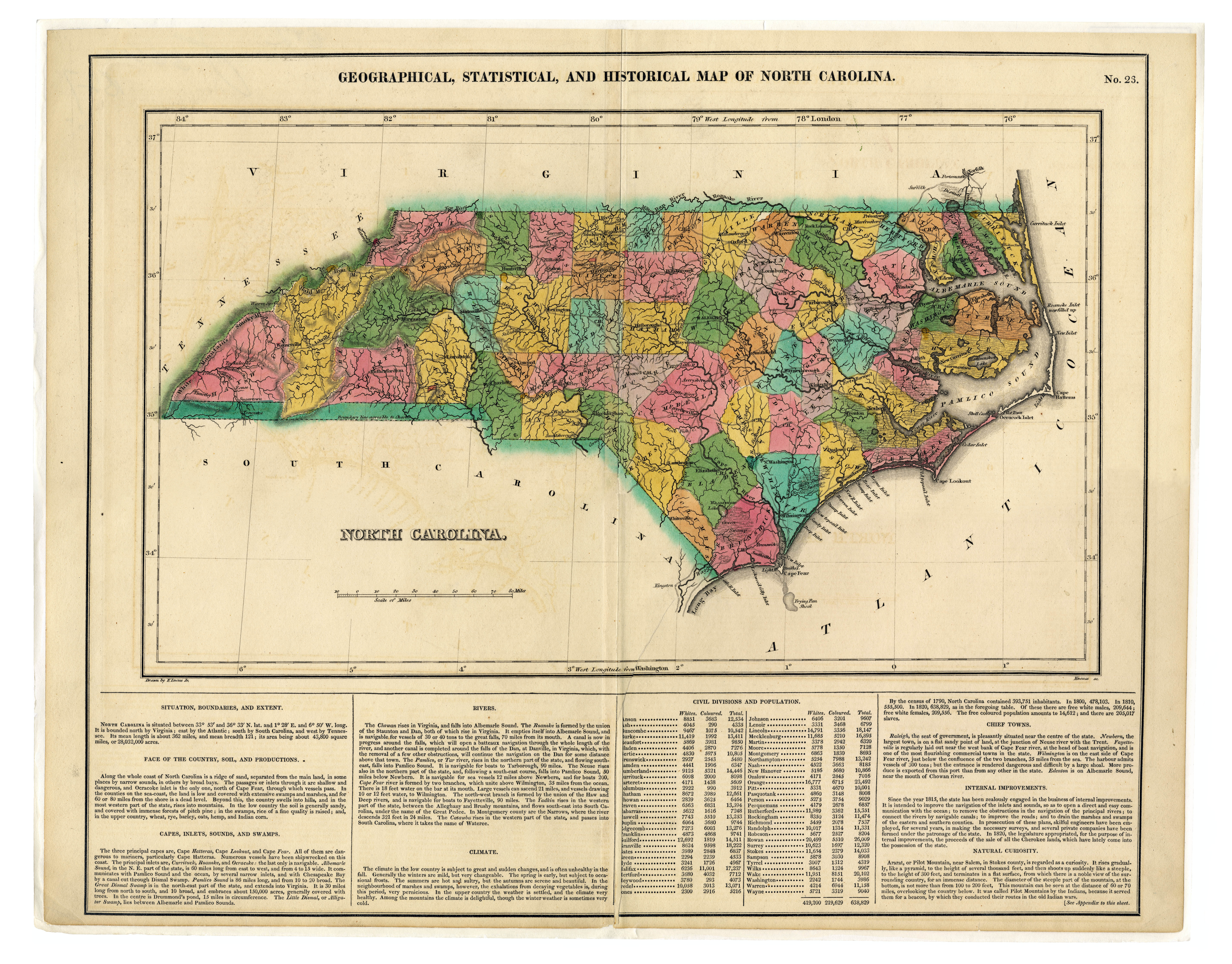Elisha Mitchell, a professor at the University of North Carolina, traveled often through the Appalachian mountains, exploring and doing research. He wrote this letter to his wife on one of those trips, in the summer of 1828, while staying in Jefferson. The letter tells us a little about his geological research, but it also tells us a great deal about what travel and transportation were like in western North Carolina in the early 1800s.
Jefferson, Saturday EveningMitchell's next letter is dated "Jefferson, July 9th, 1828, Wedns. Morning," and refers to "my letter of Saturday evening last," so we know that he wrote this letter on July 5, 1828..
Arrived at this place about noon in safety.... At Mrs. ColvardsMitchell doesn't say who Mrs. Colvard was, although his previous letter was dated from "Mrs. Colberts, Friday evening" -- probably the same person, given his tendency (which we see later in this letter) to misspell people's names. He described Mrs. Colbert in that letter:This Mrs. Colbert does not appear to be very old, and yet she has six sons and five daughters.He also said in that letter that he had "put up at Massey's Hotel." So it may be that Mrs. Colvard/Colbert was the owner or housekeeper of Massey's Hotel. Since Mitchell describes Jefferson as having only six or eight houses, the "hotel" was probably just a boarding house, a residential house with an extra room or two where Mrs. Colvard and her children lived and took in occasional guests to make extra money. Since Mitchell doesn't mention a Mr. Colvard and refers to the house as "Mrs. Colvard's" we might guess that Mrs. Colvard was a widow. Widows, unlike married women, could legally own property in the early nineteenth-century South, but they still didn't have a lot of options for employment. One option they did have was to run a boarding house or hotel and take in guests, since that kind of work was thought to be appropriate for women. the fare was rather hard; no tea or coffee but excellent potatoes. I intended to start as soon as it should be light this morning, but the sun had already gilded the mountain tops.... I first clambered up the mountain and a long and dreary clamber it was of five miles. Near the summit there is a very extensive prospect embracing a wide circuit of the comparatively low, level country through which I had been traveling, but there was nevertheless, notwithstanding the extensiveness of the prospect, something wanting. There was no water; there were no thriving towns and villages to be seen, inhabited by an industrious, frugal and virtuous grown population, and a body of youth preparing to supply with ability the plans which their fathers are shortly to leave. The rocks in the ascent of the ridge were chiefly micaMica slate is a type of salt or mineral composed of silicone and oxygen. It is commonly found in different types of rocks such as granite or slate. slate, and granite of a grain, very white and frequently with abundance of mica. Seven miles from the top of the ridge after a moderate descent — the path apparently over mica slate almost exclusively -- only two or three houses; I came to the New river. 'Tis a beautiful stream, broad but not deep, clear and running its course among the mountains, which often over-hang its banks and overshadow its waters. About three miles from this place left the river. Passed an old DunkerA member of the German-American Church of the Brethren. The Brethren believed in adult baptism and in baptism by immersion. In this ritual, an adult was taken by a minister into a river or lake and immersed under the water. The act recognized that the adult was cleansed of sin and was a member of the church. The name Dunker came from the German word tunker which means to dip, and was often (but not always) used in a derogatory way by English-speaking Americans. Mitchell seems pretty friendly towards the man, so it seems unlikely he meant any harm. who was mending his mill-raceMills at this time were run by water power, with the water from a river turning a big wheel that drove all of the gears, wheels, and rollers needed to grind grain, saw lumber, or do other work. The mill-race is a narrow channel or ditch into which the water is forced to make it flow faster as it enters the mill and turns the wheel.. He evidently is not quite orthodox, poor man; for he shaves around his mouthThe Brethren, like the Amish and Mennonites, believed that the Biblical commandment "Ye shall not round the corners of your heads, neither shalt thou mar the corners of thy beard" (from Leviticus 19:27) must be taken seriously. They wore their hair long, and did not shave their beards, although they typically shaved their upper lips. Different groups had different rules, though, and some may have allowed more shaving than others. where the beard would interfere with what he probably considers as amongst the more important duties of his life -- those of kissing his wife and eating his dinner. I am put up at a certain Mr. Lal's -- I beg his pardon, Mr. La's -- no on looking upon the sign I find his name is Faw. Jeffersontown has 6 or 8 houses -- dwelling houses -- rather shabby. Mr. MitchellAccording to Kemp Battle, who edited Elisha Mitchell's letters, this is Anderson Mitchell, a former tutor at UNC and then a lawyer and member of the North Carolina House of Commons. is gone out to electioneer at a muster, seven miles according to one informant; 12 to another. I thought at first of getting upon a horse and riding out, but finally gave it out under the idea that the people would be dispersing, if not dispersed, before I should arrive. Instead of doing that I ascended the highest of the mountains in the neighborhood along with Mr. Faw, and a rugged ascent it was. Saw a good many plants that were new to me, dug a root of ginsengGinseng is a plant native to North America and parts of Eastern Asia. The root is known for its medicinal properties. for you, a small one with my own hands. The air being clear, the prospect was delightful. The PilotPilot Mountain, which is 24 miles north of Winston-Salem. It is believed that the Saura Indians who lived in this area called the mountain Jomeokee, which loosely translated into English as "the guide" or pilot because it could be seen from so far away that it could guide their travels. could be distinguished clearly, probably at the distance of near a hundred miles. It appeared to be almost exactly east. The GrandfatherGrandfather Mountain is located north of Morgantown, North Carolina. At 5,946 feet, it is the highest peak in the Blue Ridge mountains, and it is visible from great distances because it is so much higher than the surrounding mountains. At the time Mitchell was writing, Grandfather Mountain was believed to be the highest peak in North Carolina. Mitchell later discovered the mountain that bears his name, Mount Mitchell, and proved that it was higher -- at 6,684 feet, the highest peak east of the Rockies., or the mountain which we supposed to be the one bearing that name, bore S. 40 WestThis refers to a compass bearing, or direction on the compass. The compass has 360 degrees (because it's a circle): 0 degrees is due north, 90 is east, 180 is south, and 270 is west. It's easier to use what's called a quadrant bearing, which divides the compass into four 90-degree sections or quadrants. "S. 40 West" means to start south, then move 40 degrees to the west. It's the same as saying simply 220 degrees, but "S. 40 West" gives a quick sense of the direction -- Grandfather Mountain was just about due southwest of Mitchell's present location.. We had a clear view of the country lying down the New River in Virginia, and also of the part of Surry, Wilkes, etc. lying near the Blue Ridge, for the point on which we were standing was high enough to overlook the Blue Ridge. Nearly the whole county of Ashe lay at our feet, the Merry-AndersA way of saying "meanders." A meandering river has many winds and bends. of the river could be traced as on a map. Some of the plantation in view also presented a noble appearance, but oh, what an ocean of mountains. That spoken of is called the Negro MountainNegro Mountain is located near Jefferson in North Carolina, south-west of Asheville. It is believed it was named as such because slaves who ran away from their masters lived on this mountain, although this may well have been a myth. About thirty years ago, it was renamed to "Jefferson Mountain.", the rocks of it are almost hornblendeHornblende is a mineral composed of calcium, magnisium, and iron. It can be dark brown, black, or green in color. slate, or gneissoidGneissoid is a type of rock with coarse grains and contains mostly quartz and mica, as well as other minerals. hornblende rock. I have yet seen none of the rock which I supposed from the representation of McClure to underlie the whole county. I start on now today to ascertain if possible when the strata changes, and this leads me to speak of the future. I have been as good a correspondent as possible. This letter will leave here tomorrow morning before it is light and will reach you, as I hope, on Thursday nextMitchell was writing on Saturday, so it would take four days for the letter to reach Chapel Hill from Jefferson.. I assure you that all is well hitherto, and encourages the hope that it will continue so hereafter. But on Monday I shall probably start on horseback and not be near my writing apparatus for a week, and then perhaps not under circumstances that will permit me to use them. With what you now receive therefore you must rest contented for some time, perhaps till my return, though I will write if I can. I propose as I have already mentioned to start on Monday and travel the northern or lower part of the county and be back to the upper part to be present at a muster next Saturday. The ruggedness of the country renders it necessary I should go on horse-back. In about a fortnight I hope to pass over into Wilkes again and cruise about there and to be home again in five weeks from today. With regard to things at home, push the girls along with their learning -- which I acknowledge you are ready to do. But becoming convinced, as I do, as I travel the country, of the importance of education, I can not help feeling a degree of impatience to have that of my daughters effected as rapidly as possible....
From your Affectionate Husband,
E. MITCHELL.s his work, the places he stayed, and the people he met. Includes historical commentary as well as a contemporary map and a Google map with relevant locations marked.


